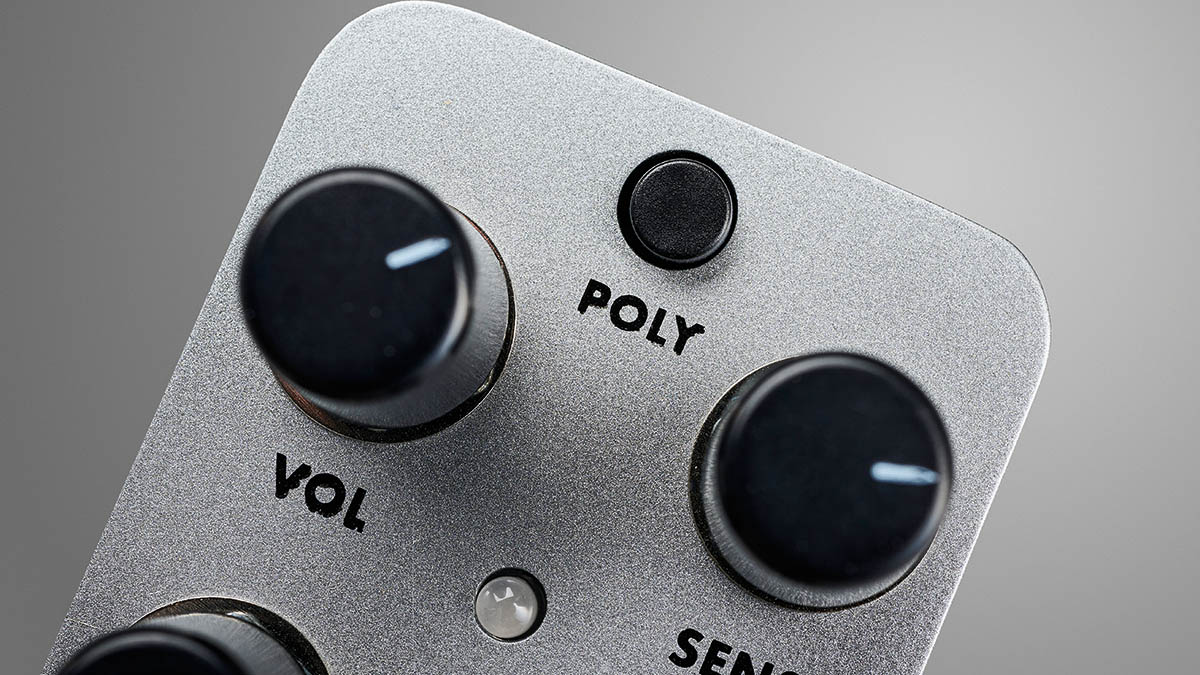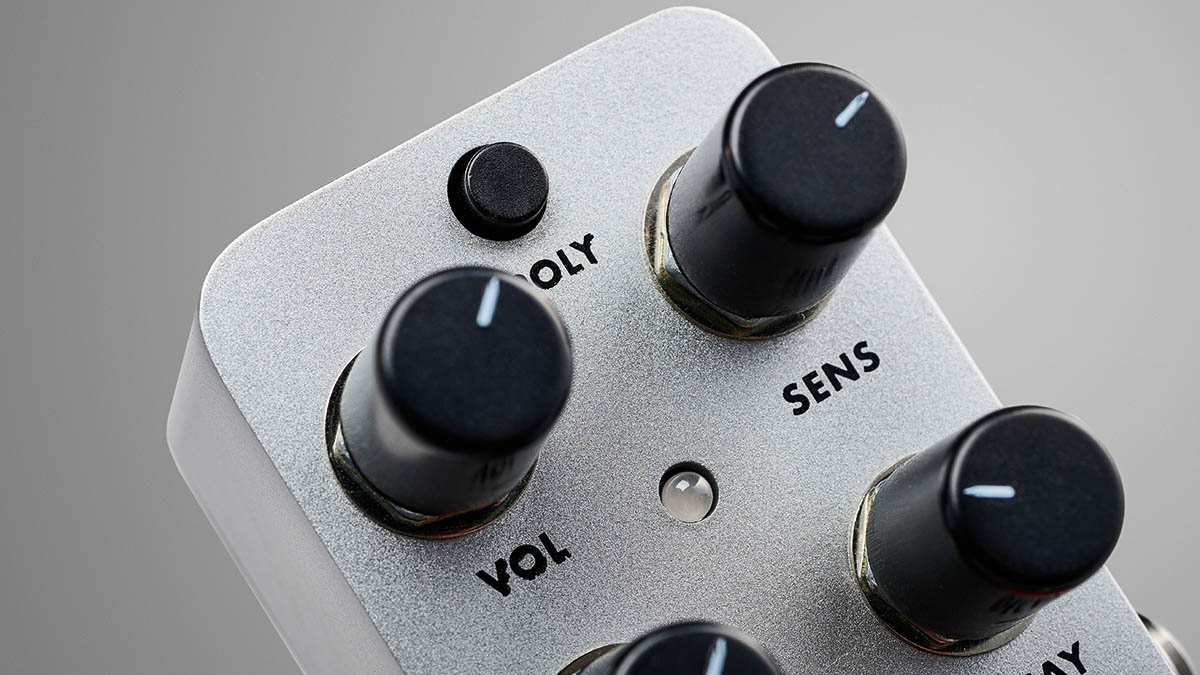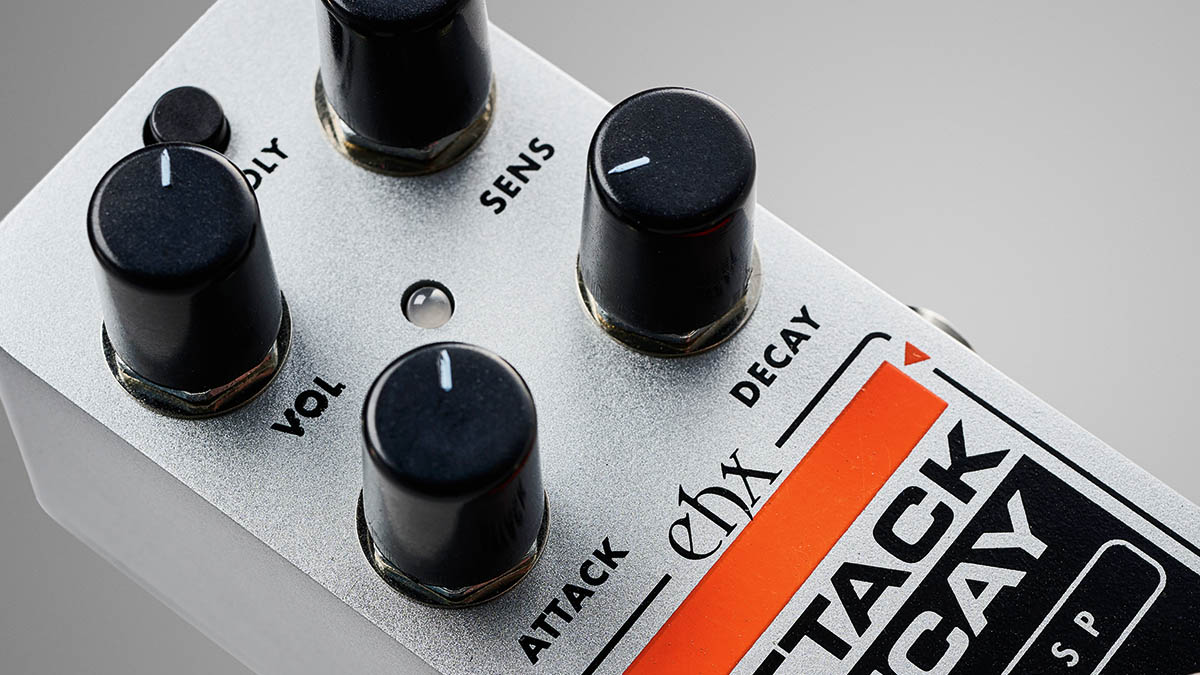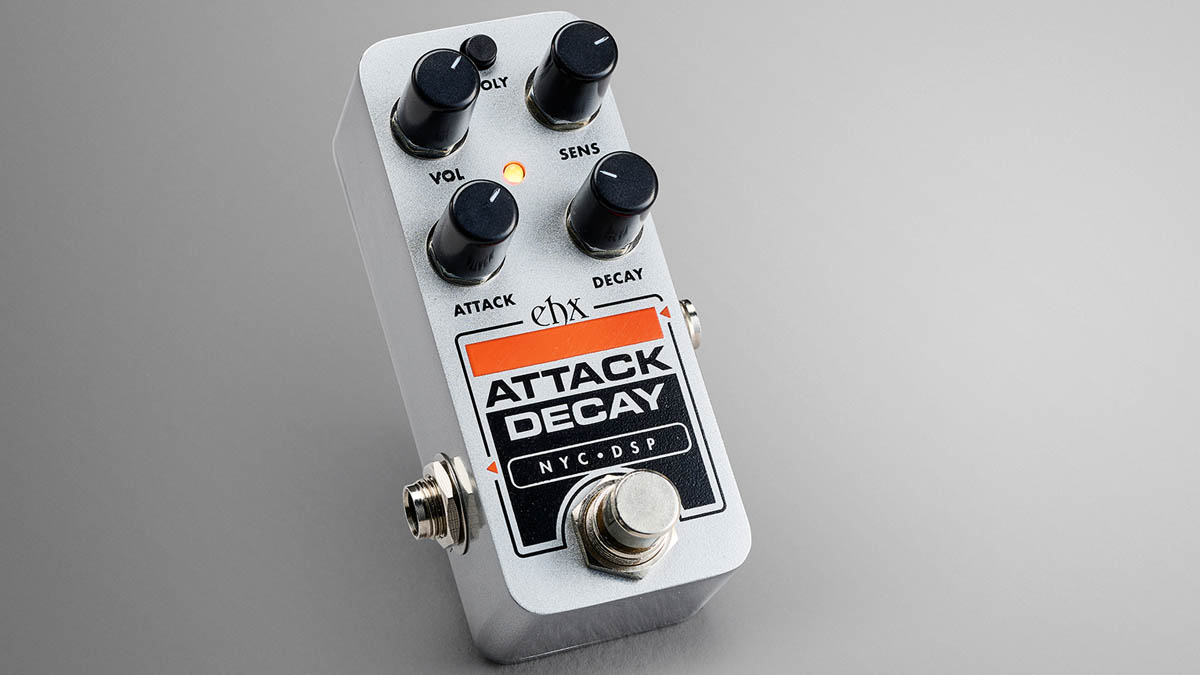Guitar World Verdict
On the face of it, the Pico Attack Delay is a pretty unassuming pedal, but delve deeper and it’s got dozens of possibilities – plus it’s small enough to take up very little space. We like it!
Pros
- +
Capable of dialing in some interesting variations in attack.
- +
Compact and affordable.
- +
Something different entirely.
- +
Slow fade setting is very cool.
Cons
- -
A little niche for some, but you've got to try it.
You can trust Guitar World
There are some effects that fill us with excitement, and others that instantly sound like the pedal equivalent of your sensible keyboard-player mate who doesn’t like fun.
The Attack Decay’s name might fool you into thinking it lives in that ‘utility’ category, and in all honesty, once we tell you that it is a transient shaper – modifying the envelope of your input signal’s sound wave – that perception probably won’t change.
But, what we have here is actually a hugely creative tool based on EHX’s larger-format pedal of the same name. Only now it’s been shrunk to the new Pico size, with the power to unleash spooky, ethereal sounds, or take you on a full-on psychedelic hippie freakout, and it does it all using our old pal, volume.
The controls are (for the most part) simple – there’s a Level control which sets your output, and a sensitivity control, which governs the level at which the effect will kick in.



Attack, which fades in your signal in a similar way to the ‘violining’ trick using your guitar’s volume control. The decay knob does the same, but at the other end, acting more like a staccato gate than a fade. Then there’s the Poly button. This takes the pedal from one monophonic envelope, to triggering a new envelope for each string.
Now, we said this wasn’t your boffin’s stompbox, so what does all of that mean for sound? As you can expect, there’s the obvious slow-fade setting which is always a winner. But with some experimentation you can manipulate the pedals to give you a much more ‘plucky’ sound, or roll off just the initial part of your attack to create synthy/mellotron type replications.
As is often the case, though, things become more interesting when you start to combine it with other pedals. Placed in an effects loop after a reverb and delay pedal makes for some cool pad sounds, or feeding it into a wah pedal for additional filtered, reverse textures.
All the latest guitar news, interviews, lessons, reviews, deals and more, direct to your inbox!
Specs
- PRICE: $136 / £129
- TYPE: Envelope shaper
- CONTROLS: Level, Attack, Decay, Sensitivity, Poly/Mono
- SOCKETS: Input,output power
- TRUE BYPASS: Yes
- POWER: 9V PSU, included
- CONTACT: Electro-Harmonix

Stuart has been working for guitar publications since 2008, beginning his career as Reviews Editor for Total Guitar before becoming Editor for six years. During this time, he and the team brought the magazine into the modern age with digital editions, a Youtube channel and the Apple chart-bothering Total Guitar Podcast. Stuart has also served as a freelance writer for Guitar World, Guitarist and MusicRadar reviewing hundreds of products spanning everything from acoustic guitars to valve amps, modelers and plugins. When not spouting his opinions on the best new gear, Stuart has been reminded on many occasions that the 'never meet your heroes' rule is entirely wrong, clocking-up interviews with the likes of Eddie Van Halen, Foo Fighters, Green Day and many, many more. If he's not playing the guitar, you'll likely find Stuart behind the kit playing Valerie to newlyweds.

